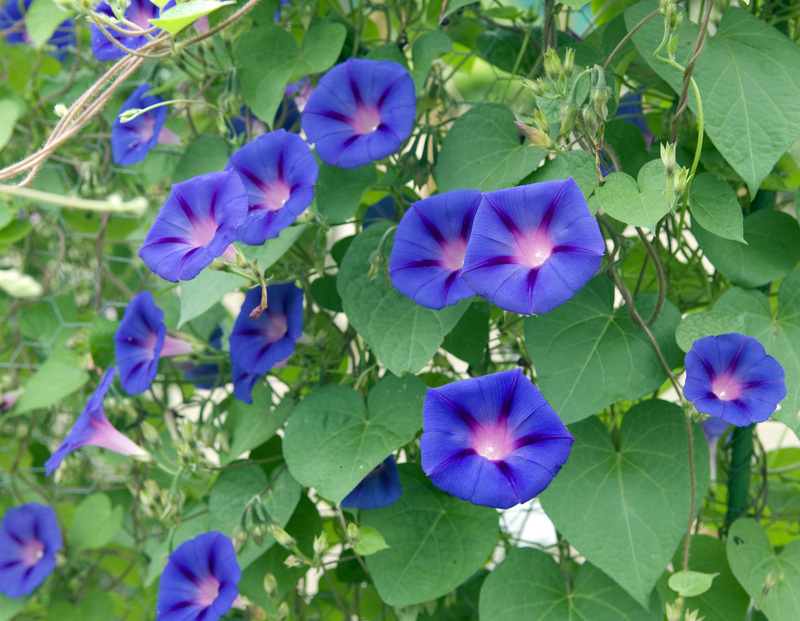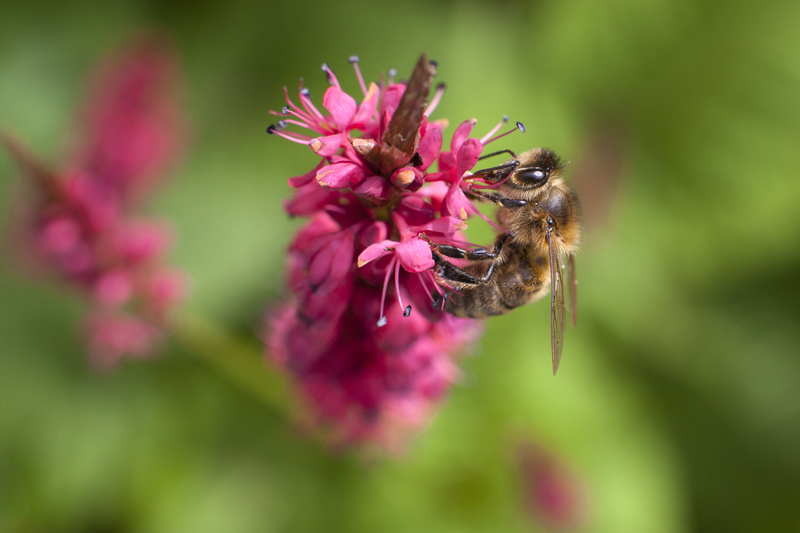Horticultural Craftsmanship: Unique Hedge Trimming Shapes and Techniques
Posted on 01/06/2025
Horticultural Craftsmanship: Unique Hedge Trimming Shapes and Techniques
Welcome to the fascinating world of horticultural craftsmanship, where artistry, precision, and botanical expertise converge to transform ordinary hedges into living sculptures. In this comprehensive guide, you'll discover unique hedge trimming shapes and innovative techniques that elevate gardens from simple green walls to breathtaking masterpieces. Whether you're a seasoned gardener or a passionate beginner, this article provides inspiration and practical insights to help you master the creative craft of hedge trimming.
Why Horticultural Craftsmanship Matters
Horticultural craftsmanship isn't just about maintaining neat lines; it's about interpreting nature as a canvas. Hedges serve as living architecture, defining space, adding privacy, and setting the visual tone of landscapes. Employing advanced hedge trimming techniques can transform these green boundaries into expressions of personality, history, and artistic flair.
The Role of Hedges in Landscape Design
- Structure: Hedges provide visual boundaries and structure to gardens.
- Privacy: Dense, well-trimmed hedges function as natural privacy screens.
- Seasonal Interest: Flowering and variegated species add color and texture throughout the year.
- Wildlife Habitat: Hedges serve as shelter for birds, insects, and small mammals.
Advanced hedge shaping amplifies these benefits, offering both practical and aesthetic impacts.

Fundamental Tools for Expert Hedge Trimming
To achieve intricate hedge sculpture designs and unique shapes, you'll need the following essential tools:
- Hand Shears: For detailed work and accuracy.
- Powered Hedge Trimmers: Ideal for large areas and shaping straight lines.
- Topiary Frames: Wire frames guide shapeshifting and symmetrical cutting.
- String Lines and Stakes: Help maintain uniformity and level cuts.
- Pruning Saws: For harder, thicker branches within the hedge.
- Ladders and Platforms: Ensure safe access to tall hedges.
Popular and Innovative Hedge Trimming Shapes
Crafting unique shapes is where horticultural artistry truly shines. From classic to contemporary, these are some of the most captivating forms you can achieve:
Classic Geometric Forms
- Rectangular and Square Hedges: Instantly create a formal, symmetrical look.
- Spherical and Dome Shapes: Offer softness and balance to linear garden designs.
- Pyramidal and Conical Hedges: Add visual dynamism to entryways and garden intersections.
- Spirals: Eye-catching twists achieved using a gradual, patient approach.
*Geometric trimming requires keen attention to symmetry and consistency for a polished result.*
Organic and Freeform Designs
- Cloud Pruning (Niwaki): Originating in Japan, this technique results in whimsical, cloud-like forms that emulate natural landscapes.
- Rolling Waves: Smooth, undulating lines that mimic the movement of water or hills.
- Animal Topiaries: Hedge sculptures shaped like elephants, birds, or rabbits bring gardens to life.
- Abstract Shapes: Bold, modern, and unconventional structures for creative expression.
Organic designs require a keen eye and a playful touch, perfect for gardeners seeking uniqueness.
Themed and Seasonal Hedge Displays
- Holiday Motifs: Hearts for Valentine's Day, stars for holidays, or eggs at Easter.
- Lettering and Numbers: Personalize gardens with family initials or milestone numbers.
- Maze and Labyrinth Hedges: Entertain and challenge visitors with intricate pathways.
Mastering Techniques for Horticultural Craftsmanship
Achieving unique hedge trimming shapes goes beyond simple cutting. Here are essential techniques to master:
1. The Art of Topiary
Topiary is the age-old craft of training and trimming plants into clearly defined shapes. Traditionally associated with grand European gardens, topiary remains a coveted skill in modern horticulture. The process relies on careful planning, regular maintenance, and a patient, artistic approach.
- Start with suitable plant species (e.g., boxwood, yew, privet).
- Use wire frames for complex shapes or freehand for simpler forms.
- Perform frequent, minor trims rather than infrequent, drastic cuts.
2. Layered and Tapered Trimming
Achieve multi-dimensional hedge shapes by gradually tapering the hedge from a broad base to a narrower top. This technique:
- Improves exposure to sunlight and air throughout the hedge.
- Supports healthy growth and reduces dieback at the base.
- Enhances visual depth and sophistication.
3. Espalier and Pleaching
- Espalier: Training shrubs or small trees into flat, two-dimensional patterns against a wall or framework.
- Pleaching: Intertwining branches of hedgerow trees to form elevated "hedge walls."
Both methods combine horticultural technique with living architecture, creating dramatic avenues and green corridors.
4. Freehand Artistic Shaping
Advanced gardeners often forgo frames, using their intuition to sculpt expressive and one-of-a-kind hedge shapes. Success demands careful observation, slow progress, and continuous refinement.
Species Selection for Creative Hedge Trimming
The right shrub species is the foundation for unique hedge design. Consider the following when selecting plants for your artistic ambitions:
- Boxwood (Buxus sempervirens): Dense, slow-growing, ideal for small-leaved, detailed shapes.
- Yew (Taxus baccata): Tolerates severe pruning, excels in both geometric and freeform topiary.
- Ligustrum (Privet): Quick growing, affordable, and responds well to shaping.
- Holly (Ilex crenata): Dark green, small leaves, strong structure.
- Lonicera nitida: Vigorous, ideal for intricate forms in partial shade.
- Hornbeam, Beech, Laurel: Great for larger, formal hedges and pleached avenues.
Each species has unique maintenance requirements; choose one that matches your climate, intended shape, and maintenance commitment.
Best Practices for Health and Longevity
Proper hedge maintenance ensures not only beautiful shapes but also healthy, vigorous plants. Follow these core guidelines:
- Timing: Conduct severe pruning in late winter or early spring. Light trims can occur throughout the growing season.
- Sharp Tools: Use clean, sharp blades to prevent tearing and disease transmission.
- Gradual Shaping: Make incremental cuts, standing back frequently to monitor symmetry and growth.
- Nutrition and Watering: Hedge plants require ample water and balanced fertilizer for dense, lush foliage.
- Pest Management: Monitor for disease or insects, and act promptly to mitigate issues.
- Sunlight Exposure: Shape hedges so sunlight reaches all areas, reducing thin spots or dieback.
Inspiring Examples of Hedge Trimming Mastery
Across the globe, horticultural artists push boundaries with extraordinary hedge designs:
Levens Hall Topiary Gardens, England
- World-renowned for centuries-old, fantastical yew topiary - castles, chess pieces, and peacocks are all represented.
Marqueyssac Gardens, France
- Host to more than 150,000 hand-pruned boxwoods shaped into domes, waves, and abstract forms, set against breathtaking cliffs.
The United Kingdom's Maze Gardens
- Intricate labyrinths and puzzle hedges, where horticultural skill meets playful design.
Contemporary Urban Spaces
- Modern designers incorporate geometric or abstract hedge sculptures in city parks and private courtyards, merging nature with architecture.
Tips for Achieving Unique Hedge Trimming at Home
Ready to start your own horticultural journey? Here's how to bring creative hedge trimming to your garden:
- Plan your design: Sketch the shape you envision. Use garden hoses, string, or stakes to plot curves and lines.
- Go slowly: Remove small amounts at each session. It's easier to trim more later than to wait for regrowth.
- Step back: Regularly evaluate your progress from different angles and distances.
- Experiment: Don't be afraid to try new forms, even if unconventional. Some of the best results come from creative risk-taking.
- Consult experts: Seek the guidance of local horticulturists or garden designers for advanced advice.
- Join a community: Online forums, gardening clubs, and topiary societies offer support, resources, and inspiration.

The Future of Horticultural Craftsmanship: Technology Meets Tradition
Advancements in technology are reshaping (pun intended) the art of hedge trimming. Traditional hand tools are now complemented by laser-guided trimmers and 3D-printed topiary frames. Drones and computer modeling allow for precise layouts in expansive gardens. Yet, at the heart of horticultural craftsmanship remains the gardener's artistry and vision, ensuring each hedge is a unique, living work of art.
Conclusion: Embrace the Art of Unique Hedge Trimming
Whether you choose classic geometric forms, whimsical animals, or bold, modern sculptures, unique hedge trimming shapes offer endless creative opportunities. By mastering techniques, selecting suitable species, and caring for your living creations, you'll transform your landscape into an enduring testament to horticultural artistry. Remember, every beautifully trimmed hedge is a celebration of patience, vision, and love for the natural world. Let your imagination be your guide, and see your garden blossom into a true masterpiece.

